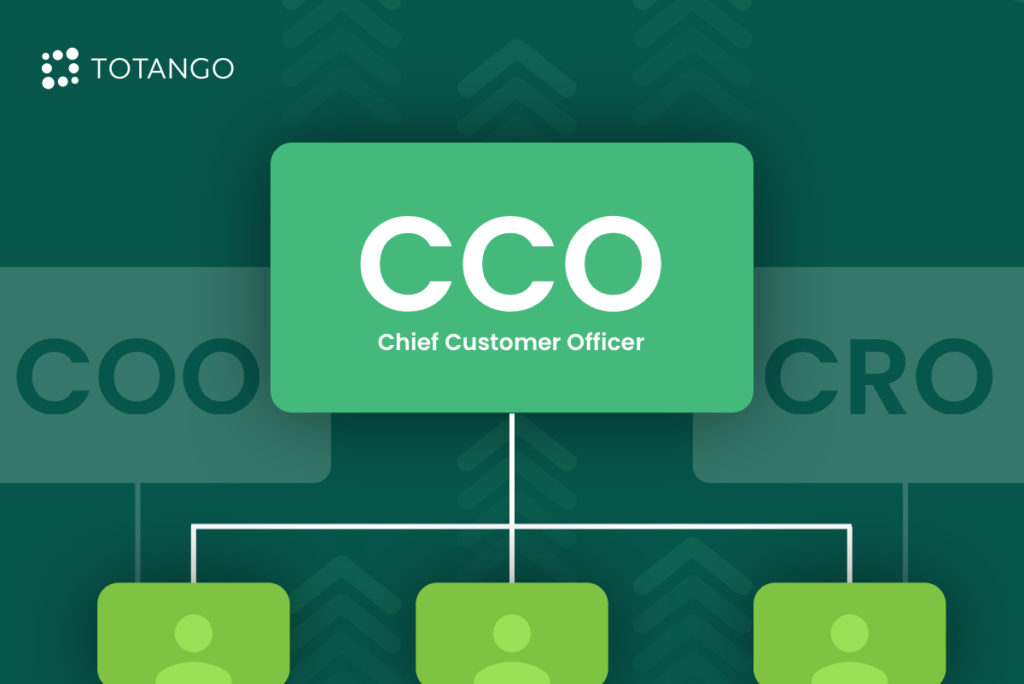The role of a Chief Customer Officer (CCO) is a fairly new addition to the C-suite, but it has been on the rise over the past several years as companies are better understanding the importance of creating a customer-centric culture within their organizations. Customer Success (CS) teams are designed to build, maintain and optimize lasting relationships with customers by helping them fulfill, and even exceed their own business goals. But in order to do this effectively, CS teams need representation and leadership at the executive level.
According to Totango’s 2021 State of Customer Success Industry and Salary Report, there was an increase in the number of CS teams reporting to Chief Customer Officers, Chief Operating Officers and Chief Revenue Officers, as well as a significant decrease in teams reporting to Sales and Service or Support leaders over the past year.
As the role of CS expands and integrates into other parts of the business, the role of CCO is becoming more popular and more necessary. So, what does a Chief Customer Officer do and why is this role so important? Let’s explore.
What Does a Chief Customer Officer Do?
The Chief Customer Officer is typically the highest position in a customer success department and reports directly to the Chief Executive Officer (CEO), though this may vary between companies. The CCO is the voice for the CS department and is responsible for uniting C-level executives and the rest of the company on customer-centric values. Some of the main responsibilities of the CCO include:
- Working with the executive board to create and implement CS strategies, such as customer loyalty programs or CS training programs for employees.
- Championing a customer-centered mindset within the company.
- Unifying customer data to create a comprehensive 360-degree view of customers that is accessible to all team members.
- Building up high-quality, long-lasting customer relationships to boost engagement, advocacy and expansion.
Why the Chief Customer Officer Role is on the Rise
While the role of Chief Customer Officer has been growing for a few years now, the need for this position was strengthened by the COVID-19 pandemic. The pandemic shined a light on the importance of growing and protecting customers. Since many companies did not know when or if they would be able to secure new customers, they had to focus on generating advocacy and revenue from their existing customers. No matter how great your product is, your customers still need to have a positive experience and be expertly nurtured and supported throughout their journey with your company in order to keep buying from you, adopt more products, and/or advocate for your company. A CCO drives this customer-centric message throughout the organization and helps to implement key strategies that help retain customers and enhance the value they receive from your products and services, as well as their overall experience with your company.
The Difference Between a COO, CRO and CCO
According to Totango’s 2021 State of the Industry Report, 73% of respondents reported that executive support was one of their top challenges in performing their jobs, which further highlights the need for CS representation in the C-suite. As mentioned earlier, many companies rely on the role of a Chief Operating Officer or a Chief Revenue Officer to handle the responsibilities of a Chief Customer Officer, but these roles are very different and serve various purposes for the company.
A COO is often considered the second in command to the CEO and is responsible for supervising the daily operations of a business. The COO may be tasked with managing a variety of issues for the company, including financial growth, development, sales, marketing, research and human resources. Essentially, the COO is responsible for ensuring that the organization and its employees are carrying out the CEO’s vision and plans.
A CRO is responsible for the processes and procedures around generating revenue for the company. They are tasked with aligning all revenue-related tasks, such as pricing, sales, customer support, marketing and revenue management. The CRO uses the CEO’s vision for the company to create new opportunities and markets for the company.
A CCO is focused on the customer: customer retention, customer service, and building customer relationships. The CCO helps unite the executive team with a customer-centric vision so that all departments work together to support this viewpoint and deliver a consistent experience. A company’s success relies on the success of its customers, so the customer experience should be more than just another project for the COO to manage or another revenue stream for the CRO to consider. Having a CCO in place for the CS team to report to shines a light on the importance of the customer experience and the impact that each customer has on the company as a whole.
What is the Salary Range for a Chief Customer Officer?
Much like any position, the salary for a Chief Customer Officer varies depending on factors like location, years of experience, education, etc. According to a report by Salary.com based on HR-reported data, the average CCO salary in the United States is $227,100, but the salary range typically falls between $192,100 and $270,500.
The Right Tools for the Job
Whether your company has a CCO, is considering hiring one, or is just starting out on your customer success journey, your CS team needs to have the right tools to be successful. Totango can help your company integrate customer-centric best practices throughout your business operations, engage proactively with customers throughout every stage of the customer journey, and deliver best-in-class customer experiences and business results. Get started with Totango for free today at Totango.com/sign-up.

